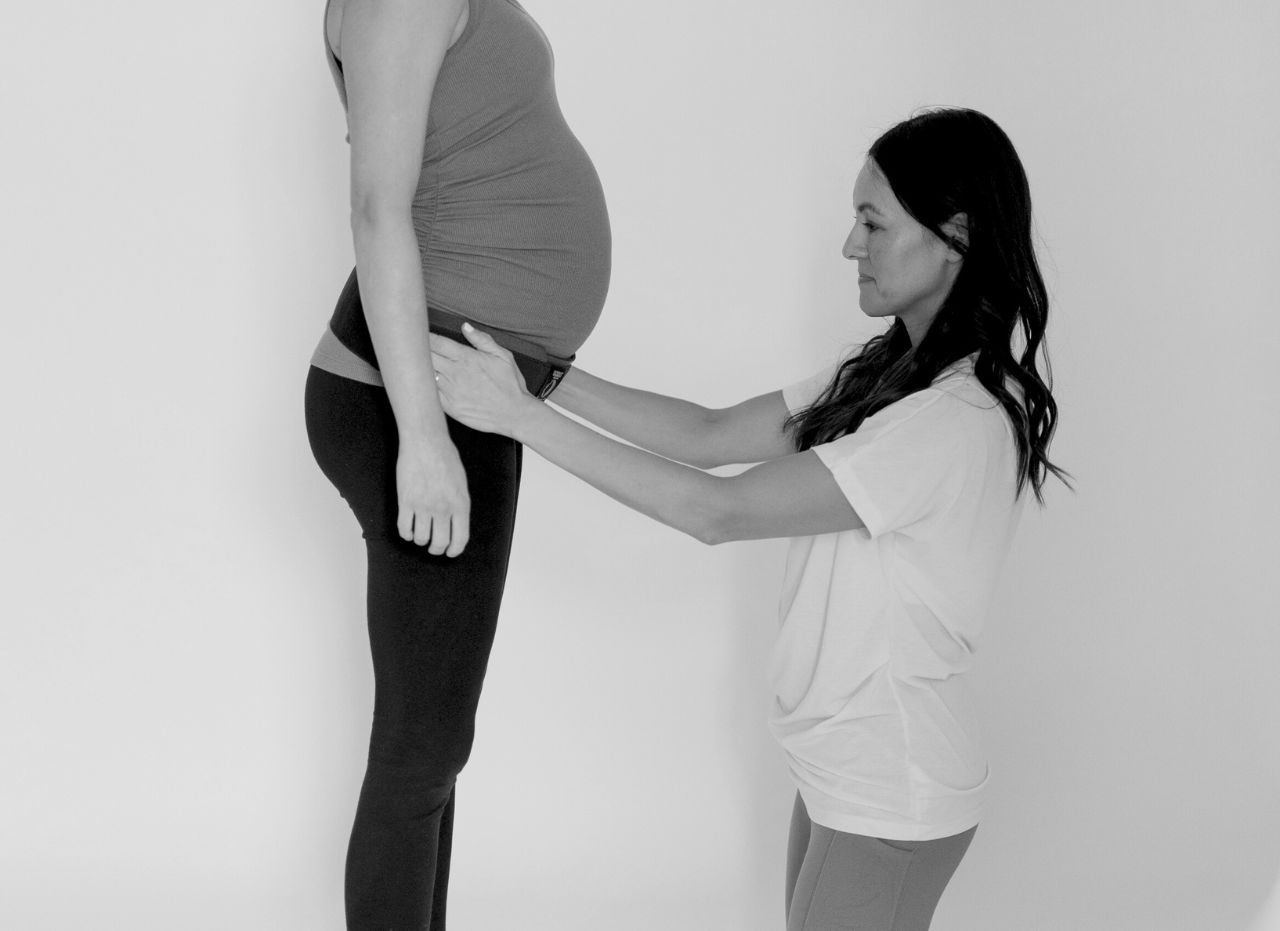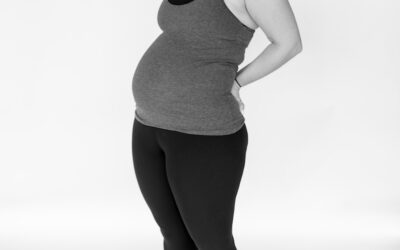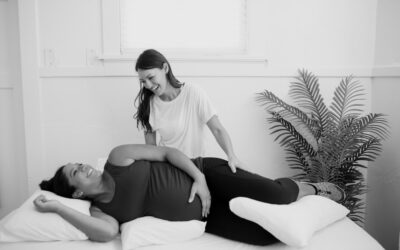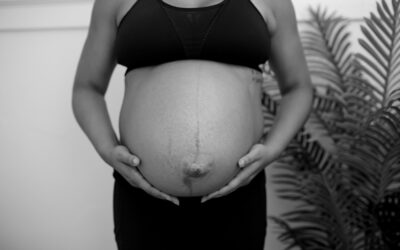If you’ve had it, then you know what I’m talking about. Symphysis pubis dysfunction (SPD), also known as pubic bone pain, feels like a sharp or shooting pain in your pubic bone or groin. This pain can occur when you roll over in bed, take a step, stand on one leg while getting dressed or get out of the car. SPD in pregnancy is super common.
Why does SPD in pregnancy occur?
SPD is due to an increase in hormones. This increase causes your muscles and joints to get loosey-goosey. These hormones help your pelvis expand to allow space for a growing fetus, but can also cause pain and instability in your pelvic joints.
How to manage daily activities with SPD
- Drink plenty of water to stay hydrated.
- Sit down to put on your socks and shoes or to shave your legs. Standing on one leg can often make pain worse.
- Get a compression or maternity support to keep your joints supported. My faves are the Serola belt and MomEZ maternity support. You will want to wear this throughout the day and with activity/exercise.
- Stay symmetrical. When you sleep, put a pillow between your knees and keep your legs together when getting out of the car.
- Work with a pelvic floor physical therapist to learn how to strengthen the muscles that keep this joint strong and to help prepare for birth. (Psst – we can help in an online session.)
- Put frozen peas over your vagina to help ease pain. Place over your pants or undies for 20 minutes several times a day as needed.
Common SPD in Pregnancy Questions
What are the best sleeping positions?
To sleep with SPD, sleep on your side with a pillow between your knees and your knees and ankles in alignment. When you roll over in bed, squeeze the pillow between your knees to roll.
You can wear the Serola belt at nighttime if you have pain.
To get into bed, sit where you want your booty to land in the bed. Lie down on your side and keep your knees together or squeeze a pillow between them as you bring both legs onto the bed. Same for getting out of bed. Remember to stay symmetrical with SPD in pregnancy.
Avoid activities that separate the knees. These pull on the muscles and ligaments attached to the pubic bone, causing pain.
What are the best birthing positions?
If you have SPD in pregnancy you might feel most comfortable giving birth on all fours, on your hands and knees, or in sidelying with one knee to your chest. An upright position might be comfortable as well.
What exercises help with SPD in pregnancy?
You’ll want to activate your core stabilizers with movement. This means your pelvic floor and deep transverse abdominal muscles (pelvic floor physical therapy can help with this). Perform a contraction when you stand up or lift your kids, etc. Here are some other tips:
- When walking, take shorter steps.
- When going up or down stairs try facing sideways one foot at a time. Avoid them if you can.
- Perform modified downward dog and modified cat cow.
- Deep squat alternatives like child’s pose or sidelying knee to chest are also great options to lengthen and relax your pelvic floor muscles.
Can you avoid SPD in pregnancy?
There are certain things you can avoid doing to help with SPD in pregnancy. In severe cases you can even use a rolling walker (I know, not the coolest!). You can also lean into a stroller or grocery cart to offload your pelvis a little when out and about.
Avoid standing on one leg during pregnancy. This can shift and shear the pubic bone joint and compromise balance. Sitting down will help prevent pain. Other exercises to avoid are below.
Exercises to avoid
You should avoid anything that causes you to separate your knees and can put stress on the pubic bone (like a deep squat). Here’s what to avoid:
- Deep squats
- Yoga poses like warrior poses, crescent pose and pigeon pose
- Running
- Lunges
- Butterfly inner thigh stretch
- That thigh machine at the gym
- Pilates reformer work
Pelvic organ prolapse (POP) vs symphysis pubis dysfunction (SPD)
Both affect the pelvic regions. POP occurs when the pelvic organs—such as the bladder, uterus, or rectum—drop down and press into or out of the vagina. SPD is a condition where the pelvic bones are misaligned, causing pain and discomfort in the joints around the pubic area.
Both POP and SPD can cause significant pain, discomfort, and distress. Pelvic floor physical therapy can help to strengthen the pelvic muscles and ligaments, reducing symptoms of both POP and SPD.
How can you manage SPD in pregnancy?
You should work with a pelvic floor physical therapist! This way you’ll learn how to strengthen the muscles that keep this joint strong and help you prepare for birth. The good news is, SPD pain often dissipates after baby is born.
Here at The Vagina Whisperer, we encourage all to know their options. This includes making informed decisions! You have the power to build your team to have the birth and postpartum experience you want. It’s never too soon OR too late to get pelvic floor PT.




